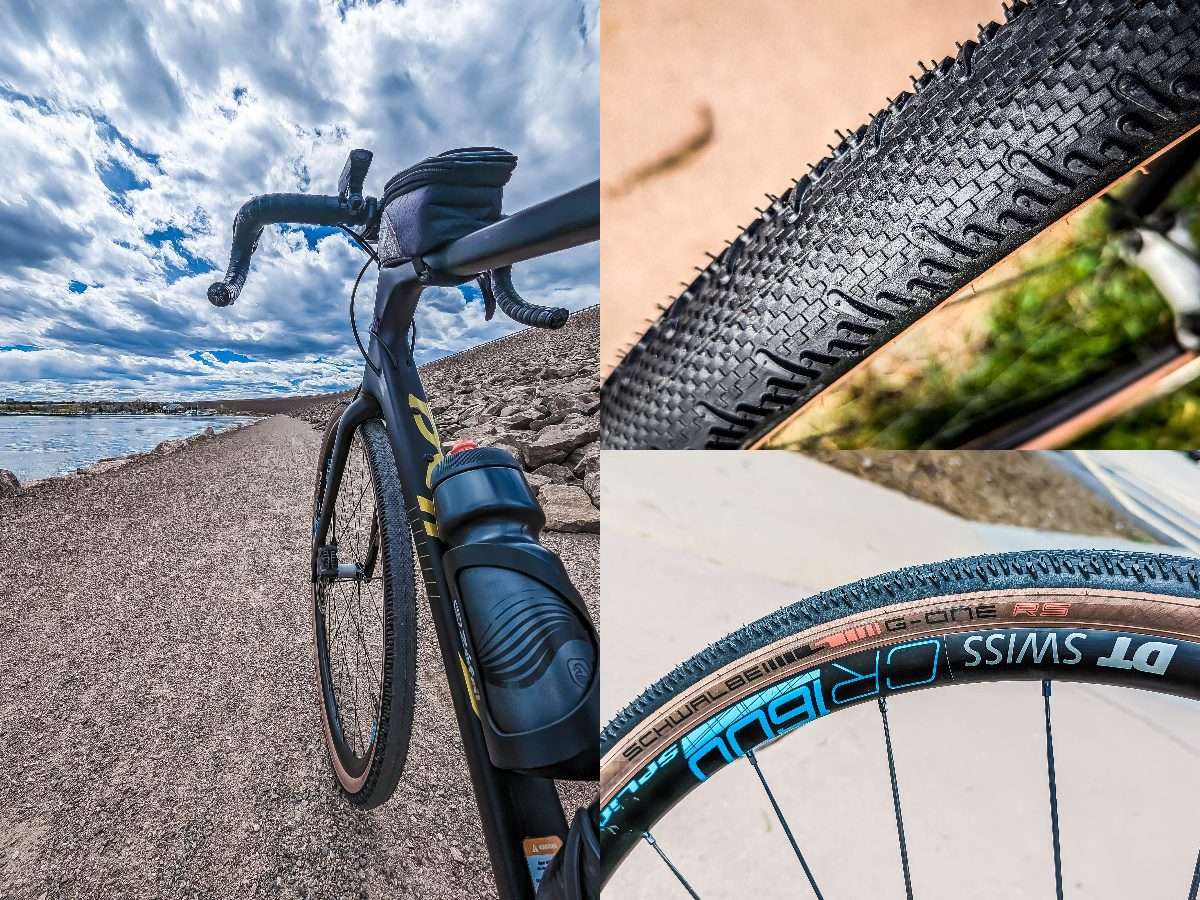So you took the plunge and and as me joined the tubeless revolution, outfitting your gravel bike with the highly-rated Schwalbe G-One RS Evo Super Race V-Guard TLE Folding tubeless tires. Two rides in, and my experience has been…well, mixed. Let’s unpack my initial impressions and troubleshoot the flat tire I encountered.
The Frustrating Flat:
After my first ride, I woke up to a partially deflated rear tire, no culprit in sight. Submerging the wheel revealed no bubbles, further deepening the mystery. Here’s what might have happened:
Incomplete Seal:
It’s possible the initial tubeless setup wasn’t perfect, allowing a slow leak to develop. Sealant usually plugs small holes, leaving a visible white residue around the puncture. However, a poorly seated tire bead could cause a leak without a visible sign.
The Messy Videos:
Those online videos showcasing tubeless explosions likely involved improper tire installation or an excessive amount of sealant. A correctly set-up tubeless system shouldn’t erupt in a shower of sealant. The $40 per tire installation cost can be attributed to the technician’s expertise and time ensuring a proper seal.
Taking Charge (Safely):
Refilling the tire to 45 psi (well within the recommended range) and having it hold pressure overnight is a good sign. The sealant likely plugged a small leak. If the pressure holds for a few more days, you can continue riding. However, a persistent slow leak would warrant a trip back to the shop for them to reassess the seal.
Tubeless on Tour: Weighing the Options
The need to carry sealant and potentially top it up during a tour is a valid concern. Here’s a breakdown of your tubeless reservations:
Sealant Maintenance: Carrying a small bottle of sealant is recommended, but not mandatory for every ride. While sealant does dry out over time (usually around 6 months, not 3, although that’s what they tell me), topping it up is a fairly simple process.
Tubeless vs. Classic Tubes: A Decision
While your experience wasn’t entirely smooth sailing, tubeless tires offer significant advantages over traditional tubes for gravel riding:
Fewer Flats: Well, on my 32C Continental Gatorskin tires, I did over 5,000 km without a single flat! Anyway, once dialed in, tubeless drastically reduces flats, especially pinch flats from low pressure riding.
Improved Ride Quality: Lower tire pressures with tubeless enhance comfort and traction.
Lighter Weight: Ditching tubes translates to a lighter bike, improving performance.
The Verdict: Patience and Practice
Tubeless systems can require some tinkering to achieve a perfect seal. Don’t be discouraged by the initial hiccup. If the tire holds pressure for the next few days, enjoy the benefits tubeless offers. If the slow leak persists, address it with the shop that installed them. Remember, the shop’s expertise can help you get the most out of your tubeless setup and ensure a smoother, flatter future for your gravel rides.
